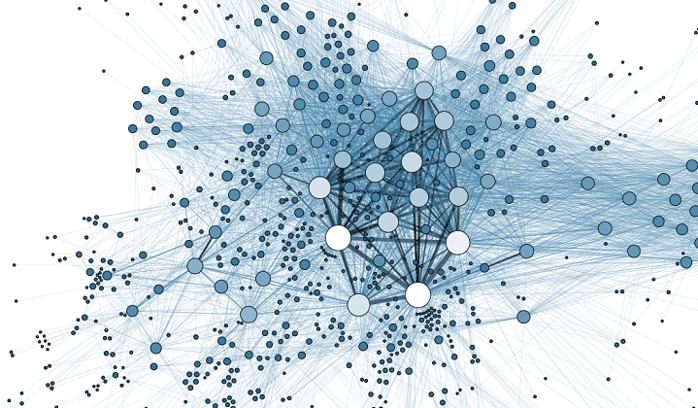Game Design Essentials: Single Button Controls

I hope you agree with me: controls are the true essence of every game. Sometimes, controls schemes are enough to define the game itself: once you decide the game controls mechanics, the rest of the game will follow. So I thought to start exploring controls schemes in a more formal way, searching for a way to analyze games from the user interaction point of view only.
We will start from the simplest control scheme possible: a game with a single button. These kind of games are recently more common than ever: they are easy to implement, easy to play and very suitable for smartphones (touch screens can be seen as single giant buttons). In other words, they are the perfect candidate for a funny mobile game.
How to generate passphrases with an RPG Dice Set

Times ago, I was reading something on numerical systems and password generators and I find myself discovering Diceware, a system for generating a passphrase using several 6-side dice. I think it was funny, so I looked for some dice in my house to try the system. Unfortunately, I have just one d6. Diceware requires five throws just for a single word and a good passphrase requires 3 or 4 words, plus some modifiers here and there. In total, I should throw that single die 20 times to get a good passphrase.
You need to decide your decisions

If there is something that I learned from my daily struggle with procrastination, is that every day you just have a limited amount of decisions. Every day, you can only do 5, 8, maybe 10 meaningfully decisions. After that you will start doing mistakes, get tired and, in general, doing wrong.
What can be surprising of this, is that doesn’t matter how important the decision is. Look at a traditional day: you wake up and you need to decide what to eat for breakfast, what clothes to wear, if it is better to go to work using the car or public transportation. You have literally just waked up and you have already depleted the big part of you decision pool for the day. And none of that decision is meaningful for your work, your career, your family, your affections.
Inventory-Aware Pathfinding - Part 1

Everybody know what pathfinding is. I don’t think I have to explain to a game developers audience why pathfinding is so important in games. If something in your game is moving not in a straight line, then you are using some kind of pathfinding.
What is less evident is that pathfinding is the only place in which “searching” is generally accepted. Except for GOAP and other planning-based techniques, the big part of the NPC’s decision-making techniques are reactive-based.
This is not a bad thing. Reactive techniques are an amazing design tool. However, this raises a question. Why is this? Mainly because of computational limits - full-fledged planning still requires an impractical amount of time - but also because of design unpredictability. The output of planning decision-making techniques is hard to control and the final behavior of the agent could be counterintuitive for the designers and, at the end, for the players.
Why can pathfinding play a role in this? Because it is possible to embed in it a minimal, specialized, subset of planning, especially if these planning instances require spatial reasoning. A common example is solving a pathfinding problem in which areas of the map are blocked by doors that can be open by switches or keys sparse around on the map. How can we solve this kind of problems?
The Primes Ancestor Tree

This will be just a small theoretical article on the Primes Ancestor Tree. We will explore the possibility to label a generic tree in such way that it will be possible to verify if a node is an ancestor of another node (or to find the common ancestor of two nodes) just by applying integer arithmetic.
In fact, sometimes ago I was trying to implement some fancy algorithm that, given two nodes from the open list of a search algorithm, finds their common ancestor. While I was doing this I asked myself if it was possible to use prime numbers in order to provide a labeling system that encodes the “descendant” relation of the nodes.
I think that I have found a theoretical system. Even if it can not be used in real-world applications, I had fun playing with it looking for the properties of the resulting labeled tree. So, I thought it could be interesting to share.
How to use Rust in Python (Part 3)

You can follow the links to read the first part and the second part of this series.
In the previous part we have seen how to pass not trivial data to Rust functions such as a Python list. It is still not enough, though. In many cases we need to pass complex data structure back and forth from a Rust library. We may need to pass quaternions, 3D points, trees, a list of “books”… In short: anything.
Learning how to pass custom aggregated data types to Rust libraries (and back to Python) will be the focus of this part!
How to use Rust in Python (Part 2)

You can find the first part of this article HERE.
In the previous part we have seen how to run simple Rust functions with integer arguments. This is not enough, of course. We need to go further by passing Python lists to Rust functions.
The problem is that it is not possible to pass directly a Python list to a C interface. Python lists (we can call them Plists) are complicated beasts, you can easily see that they are objects full of methods, and attributes and… Stuff.
| |
We need first to convert this in something edible from a Rust library. But first things first.
How to use Rust in Python (Part 1)

Rust is an amazing language. It is one of the best potential alternatives to C and has been elected two times in a row as the most promising language of the year (by me, :P). However, because its strict compile-time memory correctness enforcement and because it is a low-level language, it is not the fastest way to build a prototype. But don’t worry! Rust is the perfect language for embedding fast-binary libraries in Python! In this way we can get the best of both worlds!
Writing Rust code that can be executed in Python is stupidly easy. Obviously, you have to well design the interface between the two languages, but this will improve your Python code in two ways: 1) You can execute CPU-intensive algorithms at binary speed and 2) use real threads instead of the Python “simulated” ones (and because Rust is designed to be memory safe, writing thread safe routines is much easier). Let’s see!
Convert images to MovingAI maps

The MovingAI Benchmark Database is one of the most famous collections of maps for benchmark on pathfinding algorithms. I use it a lot during my work, it is useful to test an algorithm over a lot of real-world game maps. The consequence is that I developed a lot of tools to work with the map format of the MovingAI database.
The last of these tools is a straightforward Python script to convert images into maps in the MovingAI format. It is useful when you want to quickly develop some test maps.
Research Code vs. Commercial Code

Since the beginning of my working life, I was torn between my researcher and software developer self. As a software development enthusiast, during my experience as a Ph.D. student, I suffered a lot looking at software implemented by researchers (many times my code is in the set too). Working with research code is usually an horrible experience. Researchers do so many trivial software development mistakes that I’d like to cry. The result is: a lot of duplicated work reimplementing already existent modules and a lot of time spent in integration, debugging and understanding each other code.
On the other hand, it is almost impossible that a researcher will learn the basics of software development in some book because 1) nobody cares (and they really should!) and 2) books on this topic are mostly focused on commercial software development. This is a problem because, even if best practices overlap for the 80%, research code and commercial code are driven by completely different priorities.
So, because I am just a lonely man in the middle of this valley, nor a good research code writer nor a good commercial code writer, I can share my neutral opinion. Maybe, I will convince you, fellow researcher, that may be worth to spend some time improving your coding practices.
Secret Guide!
Congratulations! You discovered the secret guide!
Press ? to show/hide this guide!
